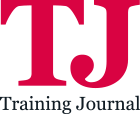Turn diversity into success with three instantly actionable insights from David Buchanan and Steve Macaulay
You know the saying: it takes all sorts? That’s the perfect description of today’s workforce. Look around your team and you’ll see different ages, ethnicities, experiences and backgrounds. When managed correctly, these differences become a valuable asset, offering fresh solutions and driving innovation. But get it wrong, and this diversity can spark disagreements and conflict. Let’s explore three ways to capitalise on your multi-dimensional workforce and use differences to fuel success.
Diversity is the key to creativity. And wicked problems need creative approaches
What’s the difference?
We’ve seen a lot of commentary about the multi-generational workforce. You could have up to five different generations on the payroll. Should you manage them differently? Recent research suggests that the similarities across the generations are greater than the differences. Most employees want the same things: purpose, flexibility, recognition and fair pay. Maybe you don’t need to provide special treatment after all.
The focus on generational differences misses a more important point. You most certainly have a multi-dimensional workforce. Staff can vary on several factors: age, background, education, ethnicity, experience, gender identity, nationality, religion. This means different motives, expectations and preferences. And this also leads to differences in perception; people with different profiles see things differently.
When people see things differently, arguments arise and create management headaches. But those differences are a valuable asset when it comes to problem-solving and innovation. Combining competing perspectives is a way to generate creative solutions.
Three actionable ways for organisational advantage
Here are three ways in which a multi-dimensional workforce can be an asset.
- What went wrong?
A piece of equipment injures somebody. Contaminated product finds its way on to the market. A patient is harmed during a hospital operation. Typically, when events like this happen, an independent investigation group is set up to carry out a root cause analysis.
A better approach, we have found, is to ask those who were involved to ‘mess map’ the incident themselves, using the leading-edge technologies of whiteboard (or wall) and sticky notes. Key to the process is that participants will not necessarily have the same understanding or experience of what went wrong.
Staff are likely to be more guarded when talking to independent investigators. Discussion with colleagues is a safe space for airing candid views. This results in a group response, and individuals are not exposed.
Participants identify factors contributing to the incident, write each of these on a separate sticky note and attach it to the board. The incident sits on the bottom right of the mess map. Notes are placed according to how close the factors were, in time and place, to the incident.
Because participants have different experiences and perceptions, this leads to a more complete understanding of the incident and why it happened. As the map is developed, sticky notes can be moved around, to highlight key issues and causal links.
Root cause analysis usually identifies one or a small number of factors, and attributes blame. Mess mapping reveals the systemic nature of such failures, and avoids the fundamental attribution error: blaming someone while ignoring the context in which they worked.
- The red team
This well-known adversarial approach has applications beyond the military and cybersecurity. Your organisation may have used a red team approach, for example, to hack into your computer systems to expose their vulnerabilities.
You can also set up a diverse group of frontline staff to act as a red team of unsatisfied customers, clients or patients. What are their main frustrations and complaints? What do you want from this organisation but never get?
A multi-dimensional perspective on this theme can generate helpful results. How is the organisation seen by different ethnic, cultural or religious groups? Are we catering for customers of different ages and gender identities?
You can also ask frontline staff to act as disgruntled employees. What are their frustrations with the organisation? Are some demographics favoured and others overlooked?
Your diverse red team may mirror your customer, client, patient and employee diversity, making this an even more valuable exercise. For example, advertisements for female hygiene products weren’t working until somebody pointed out that the ads were designed by men. Who are your customers, and who designs your ads?
Now go to future mapping and turn the mess map into action. How can we improve the customer/client offer? What steps can we take to improve employee morale? Should we treat different customer or employee segments differently?
- Wicked problems
Most organisations have problems that been around for some time. Why is staff turnover consistently high in that area? Why has productivity fallen in this department? These are ‘wicked’ problems, where the ‘obvious’ answers haven’t worked.
We are all familiar with rational, logical problem-solving: define the problem, identify possible solutions, choose best approach, implement… job done.
This approach doesn’t work with wicked problems, where you can’t even get those involved to agree that there is a problem in the first place, never mind define the problem clearly.
Bring that diverse group of employees back together again. Explain the problem that you want them to focus on. Tell them that they are going to brainstorm possible solutions.
First emphasise the non-judgmental nature of this method. The aim is to encourage creative ideas, drawing on the range of experiences and perspectives in the room. No idea at this stage is too wild or too crazy.
Diversity is the key to creativity. And wicked problems need creative approaches. This means bringing together people with different perspectives, even when they are likely to disagree with each other. A group who all think the same way won’t work so well.
Once the flow of ideas is exhausted, turn the group’s attention to assessing their output. Ask them to build on each other’s ideas, and to develop practical, cost-effective approaches to address the wicked problem.
Building a foundation to capitalise on differences
We need to make the most of our multi-dimensional workforce. A culture of open dialogue and mutual respect can help to bridge the many differences. This means encouraging active listening, promoting inclusivity and addressing genuine conflicts promptly. The people profession has to be a prime mover, providing training on diverse values and communication styles, establishing mentorship (and reverse mentorship) programmes, and facilitating knowledge-sharing. Creating diverse teams can also enhance collaboration and reduce misunderstandings.
The multi-dimensional advantage
We tend to see differences in opinions and views as a problem. This can of course lead to disagreements and damaging conflict.
But we know that multi-generational teams are more satisfied and productive than homogenous staff groups. Managed in a structured and focused way, as described here, a multi-dimensional workforce can also be a valuable asset in bringing a range of fresh and creative perspectives to difficult situations and problems.
Steve Macaulay is an Associate at Cranfield Executive Development, Cranfield University. He can be reached at: s.macaulay@cranfield.ac.uk
David Buchanan is Emeritus Professor of Organisational Behaviour at Cranfield University School of Management. He can be reached at: david.buchanan@cranfield.ac.uk




